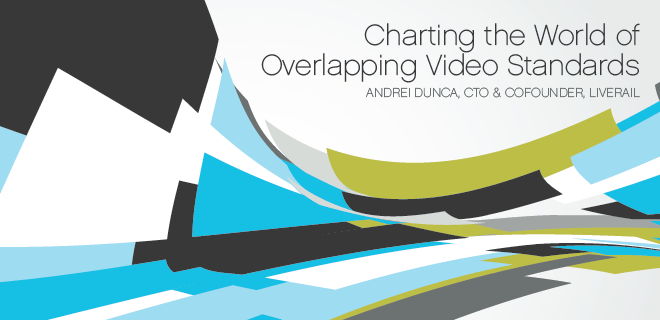
The first advertising standards, guidelines and best practices for digital video emerged four years ago, which seems like a short time in the grand scheme of history. But technology moves at an accelerated pace, and four years is enough to make anything outdated in the ad technology space. In fact, the IAB’s Digital Video Committee is about to announce a new video ad standard – its third. The existing standards are independently evolving and overlapping as well, and we may be on the precipice of watching old standards slowly fade away.
The industry’s first video standard, VAST, launched in 2008, along with definitions of digital video ad formats metrics and measurement. A second video standard, VPAID, was created to address the challenge of interoperability between video players and interactive ads.
VAST and VPAID brought the industry a long way, but when these standards were first under consideration, no one could have predicted the rise in real-time ad buying or the explosion in long-form, premium streamable content. In the next couple of months, the IAB’s Digital Video Committee will release significant updates to both standards and introduce the VMAP standard. While VAST helps ad servers convey details for a single ad break, VMAP is designed to provide information for multiple ad breaks within a video, and help schedule that sequence of ads within the same stream.
Each standard governs a different aspect of the ad serving and rendering lifecycle. But as technology evolves, the standards must keep up. As real-time bidding technology gained remarkable traction in video in the past two years, the companies operating in this space started using an extension of the VAST standard to communicate bid prices in real-time. This pricing extension is now used at scale and has become an integral part of the VAST schema. On a parallel track, RTB-focused technology companies started the OpenRTB initiative in an effort to standardize the communication between inventory pools and buyers. This initiative has a greater scope, but it applies to video as well as display.
As you can imagine, there is significant overlap between the VAST, VPAID and OpenRTB standards. For example, the VAST document schema fully covers the measurement of all the video ad-related metrics, while at the same time, a VPAID-compliant ad unit can handle tracking natively, while also exposing all the necessary events needed for sell-side measurement. Therefore, a video player and a video ad unit can function together in the absence of VAST, without losing any functionality or measurement capabilities.
Another example of overlap falls in the area of real-time bidding systems. Bids, or pricing information, along with ad metadata (such as the advertiser name used in block lists that manage channel conflict), can be sent through VAST, which is the most common practice in the industry today. But the OpenRTB standard covers bid price, metadata and much more. It is a very robust specification that VAST alone will never reproduce. Video RTB is still young, but as the systems mature, VAST will not be able to support all the buy- and sell-side requirements.
Given the existing redundancies, it is possible that in the coming years the industry will witness the decline of some of the existing standards, while others will become more focused. If VPAID emerges as the de facto format of a video ad unit, then VAST’s days are numbered.
This new world would be much simpler, with the video ad unit now reduced to one VPAID-compliant asset, instead of a complex VAST XML document pointing to a diverse set of media assets, burdening the player with their proper rendering and measurement and slowing down load times. More important, because the VPAID standard is platform-agnostic, the same video ad unit could be built for a wide range of environments, including Flash, HTML5/Javascript, mobile and TV operating systems, using the same interface and specification.
Video ad servers would then deliver assets directly, in VPAID format, circumventing the intermediary VAST, while real-time bidding systems would rely on OpenRTB to communicate ad-related metadata and pricing information. This evolution would eliminate any confusion generated by overlapping conflicting specifications and, more important, this simplification could decrease friction and improve interoperability, since the different ad serving technologies and video platforms would concentrate their efforts on less standards and compliance requirements.
After all, standards are adopted to make ad serving easy. When they start creating new confusion, it’s probably best to leave them by the wayside. Technology evolves, and standards should too.
 |
Pondering the future of TV and digital video? OPS TV will bring digital advertising leaders and ops professionals together to discuss the intersection of digital video and TV advertising. Register today for OPS TV, which will be held July 11, 2012, in New York. |